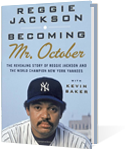MRS. ASTOR’S NEW YORK:
Money and Social Power in a Gilded Age,
by Eric Homberger
Yale University Press. 336 pages. $29.95
“At the end there was little more than the boundless civility of a hostess,” reads Eric Homberger’s eulogy for Caroline Webster Schermerhorn Astor, doyenne of New York society at the last turn of the century.
In fact, in the end there was something more akin to the last days of Mrs. Haversham. Following her “severe nervous breakdown” in 1906 Mrs. Astor continued to shop, “but at the instructions of her family the goods were never delivered.” She continued to entertain, making copious arrangements right down to the menus, the flowers, and the handwritten invitations—but these, “however closely planned, were quietly placed aside” by her servants.
This sort of caretaking sounds likely to have driven a disturbed person completely around the bend, and Homberger goes on to note that Mrs. Astor spent her afternoons “nodding to imaginary acquaintances” in Central Park and receiving “a constant and agreeable flow of visitors, all old friends, all in Mrs. Astor’s imagination…”
Sporadically, though, she was clearminded enough to give interviews denouncing the base displays that had overrun society, such as the Clewses’ “Servants’ Ball,” where all the guests dressed up like their servants (quel drole!) or Alva Belmont’s breakfast “in honor of Consul, a chimpanzee dressed in a frock coat.”
The efforts of the old dowager and her late flunky, Ward McAllister, to curb such exercises in conspicuous consumption and create the society “Four Hundred,” is the grand climax to Homberger’s work, which is nothing less than an attempt to trace the evolution of “society” across the whole span of nineteenth-century New York. This is a hugely ambitious endeavor—a story of wealth and family, social-climbing and snobbery; of intricate ritual and display; of the value of things, if not so much of people and, not least, as with everything having to do with Manhattan, it is a story of real estate.
For the most part, Homberger succeeds brilliantly. Just why anyone should feel the need for an official society may be inexplicable to the modern reader. Certainly, creating one in New York seems a Sisyphean endeavor. This is, after all, the most polyglot city on earth, incorrigibly democratic and dedicated to the making of a buck, and it has been so since the beginning when one of its most respectable citizens, the pirate William Kidd, helped build the first Trinity Church.
“New York was quite literally a city of nobodies,” Homberger writes. “The immigrants brought brass candlesticks and goose-down quilts with them, along with their guttural languages and folk traditions.”
Worse yet, they kept making money, throwing up mansions, buying family crests, stuffing the hired help into livery. How was one to know who the “good” people were?
This ceaseless, upward movement was often literal, starting at the bottom of Manhattan. “Aristocratic Neighborhoods” is a chapter unto itself in Mrs. Astor’s New York, as might be expected from Homberger, the author of the gorgeous and indispensable Historical Atlas of New York. His narrative becomes an almost comical one, the rich desperately trying to stay one step ahead of the brawling, booming, noisome city of commerce as it slithers up the island after them like a gigantic snake, constantly shedding its skin and remaking itself. Mrs. Astor herself started life, in 1830, amongst the already trembling manses of the Bowling Green; by the time she was a young lady the family lived on Bond Street, and married life took her to Lafayette Place, then 34th Street, then it was up to Fifth and 84th for her last, mad days.
It happened so quickly that, for all of our conservationists and preservationists, we barely know what we have lost. How many New Yorkers have even heard, say, of St. John’s Park, a development financed by the grasping vestrymen of Kidd’s old church? It 1807 it was an empty lot; by 1830 it was among the most fashionable neighborhoods in the city, and a model for Gramercy Park; by1866 it had been largely demolished for a railroad freight depot. It rests now beneath the entrance to the Holland Tunnel, our own Atlantis, buried under countless layers of steel and concrete, asphalt and brick.
Building mansions wasn’t enough to keep the rabble out; neither was money. What was left? Well, there were manners, and ritual, and there were things, above all things. Homberger takes us through a Borgesian labyrinth of houses and furniture and clothing, and the relentlessly pedestrian paintings the elite favored. He provides fascinating disgressions on how the purchase of everything from opera boxes to church pews could be used as a status symbol.
He tries as well to put a human face on all this acquisition, giving us amusing or poignant vignettes of various social climbers or arbiters. There is a pair of country sisters, down from Connecticut, trying to pick up some city ways; Melville’s striving parents, their upper-class aspirations coming to rack and ruin; those marvelous society toadies, McAllister and Isaac Brown, the immense, meddling sexton of prestigious Grace Church, known always to his masters simply as “Brown.” Other case histories become a little wearying, particularly when Homberger tries to show us just how interconnected the world he is dealing with could be. Hence: “John Duer, who lived at 20 Bond Street in the 1830s, was the son of Lady Kitty and Colonel William Duer and was a brother of the president of Columbia College. He successfully defended Alexander Slidell Mackenzie in the Somers cas in the 1840s (one of the central figures in the trial was Lieutenant Guert Gansevoort, a nephew of Maria Melvill)…” One takes his point, but after awhile such passages simply run together.
In the end, when all else failed, they tried dancing. Mrs. Astor and McAllister made the most vigorous effort yet to define society, through the Patriarchs’ balls, restricted to just 400 invitations. The dance itself was a social weapon, as Homberger shows, recounting how it became more and more complex throughout the century, until balls in Mrs. Astor’s heyday featured incredibly intricate versions of the quadrille; massive, highly disciplined group efforts that required skilled leaders and which, not coincidentally, served as microcosms of just how a proper aristocracy was supposed to be run.
Even this failed. Homberger reveals that Mrs. Astor herself ended up entertaining, at one event or another, some 800-1,000 people. The whole idea of a rigorously formalized society would come apart altogether shortly after her death, and why not?
There was, after all, something inherently absurd about a society whose main pillars were the Astors and the Vanderbilts, only a generation or two removed from a coarse German fur trapper and a Dutch ferryman. The aristocracy they had made was generally anti-Semitic, and racist as a matter of course; it frowned upon taking much interest in much of anything, and encouraged its young women to cultivate “an air of hauteur and rudeness”. Mrs. Astor herself seemed barely able to stand up under it. Homberger reports that in her later years she stayed at the grand balls at her own man sion only long enough to speak a few words to each guest, retiring thereafter to her bedroom for the rest of the evening. Perhaps it all just collapsed under its own weight.
Kevin Baker is the author of the historical novel Paradise Alley, about the Civil War draft riots, to be published this fall by HarperCollins.
© Copyright The New York Observer 2002









